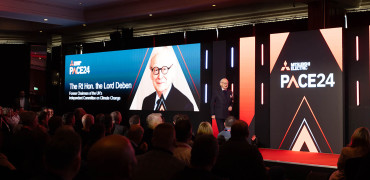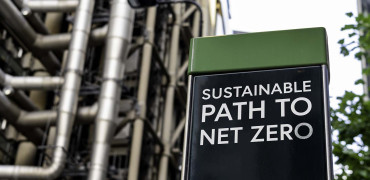We’ve been involved in a fantastic new report that’s just been published, which focuses on the fact that we are now less than 6 years away from 2030, which is a milestone year for all of the businesses and corporates that have set short-term, or in some cases end-dates for their net zero targets.
2030 is also the year in which the UN’s Sustainable Development Goals need to be achieved and the report by edie.net offers a timely reminder of the challenges that key sectors currently face, as well as the targets that need to be reached over the next five and half years.
Titled ‘Destination 2030: Plotting a course to a sustainable built environment’, the report is broken down into 6 chapters and includes sections on where we are now, decarbonisation, targets and actions, collaboration, sustainable skills, and the circular economy.
Net zero is not a competition, it’s a necessity.
A short time to change
The report is the latest in edie’s annual series of sector-specific insight reports which have explored the unique (and common) challenges and priorities of the UK’s biggest industries when it comes to sustainability and climate action.
This one is focusing on the built environment because it accounts for almost 40% of global operational energy usage and carbon emissions.
How we tackle the challenges of decarbonising buildings will act as one of the key enablers to catalysing the net-zero transition. As the report says though, “the risk is that the transition is not happening at the speed it needs to”.
What is very clear though is the businesses of 2030 will need to look very different from today and each sector will undergo unique transformations. That’s where this report offers a timely reminder of the challenges that key sectors currently face, targets that need to be reached over the next five and half years and the new transformational solutions that they will need to support in order to transition to a just, low-carbon future.
The retrofit challenge
I was delighted to be asked to write the Industry Viewpoint and decided to focus in particular on the retrofit challenge under the heading: ‘Why we can’t build our way to net zero’.
It’s been estimated that around 80% of buildings that we will live work and play in when we get to 2050 have already been built.
We can’t just knock them all down and rebuild them into super-efficient eco-homes and offices – even if we wanted to because the carbon involved in demolition and rebuilding would make the whole exercise completely and utterly pointless.
So we have to find ways of making these buildings more energy efficient and less wasteful.
No one answer
It’s a simple fact that no one person has all the answers, so a major way that we can all get to net zero is to collaborate and share experiences and information.
Net zero is not a competition, it’s a necessity. And that applies to individuals, businesses, governments, and society in general.
We know that technological solutions do exist already that can help decarbonise buildings and I predict that, despite a fairly low uptake of heat pumps so far, the next 24 months will see this change dramatically.
We’ve just finished the 17-day Ideal Home Show at London’s Olympia and our heat pump stand had a steady flow of homeowners who were seriously interested in finding out more.
There was also a lot more understanding of the technology amongst the people visiting our stand, so there is growing awareness amongst consumers and I’m confident that the residential market will pick up.
Low hanging commercial ‘fruit’
It’s already happening in the public sector, thanks to initiatives like the Public Sector Decarbonisation Fund, which has had four rounds so far.
This has seen libraries, schools, leisure centres, council offices and other community facilities remove gas and replace it with renewable heat pumps.
And it’s also happening in the private sector as Corporations are also looking to reduce carbon as part of their CSR policies. Businesses in general also realise that tougher energy efficiency legislation is coming and they have to improve the efficiency of their buildings or risk them becoming ‘stranded assets’.
Commercial buildings can also be more straightforward to decarbonise so they offer the country some ‘low hanging fruit’ to keep us sated on the road to net zero.
If you are looking at how you can decarbonise your own building, get in touch with with me on LinkedIn or Download this useful guide from the UK Green Building Council called ‘Delivering Net Zero: Key considerations for commercial retrofit’.
Dan Smith is Sustainability and Construction Manager




